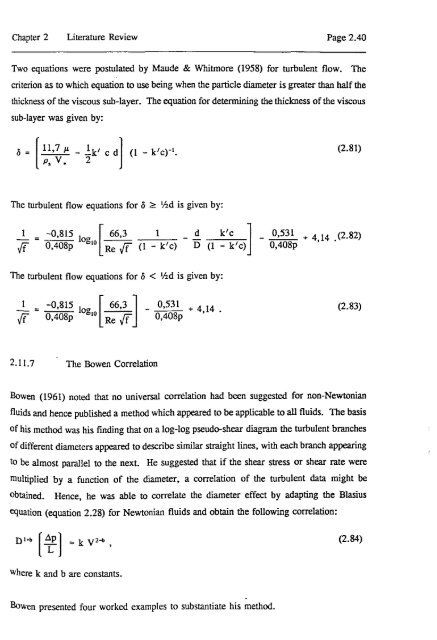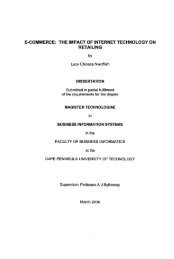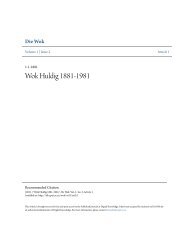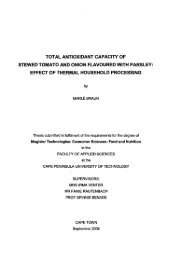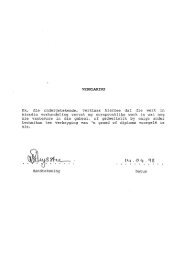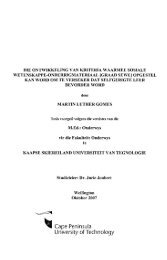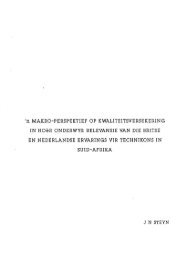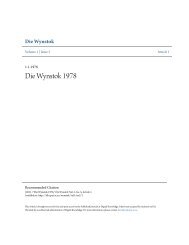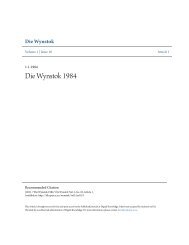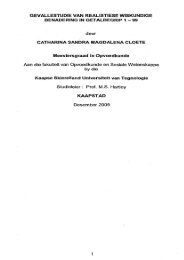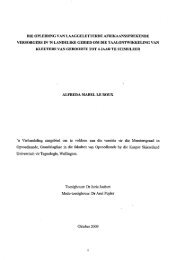the effect of the particle size distribution on non-newtonian turbulent ...
the effect of the particle size distribution on non-newtonian turbulent ...
the effect of the particle size distribution on non-newtonian turbulent ...
You also want an ePaper? Increase the reach of your titles
YUMPU automatically turns print PDFs into web optimized ePapers that Google loves.
Chapter 2 Literature Review Page 2.40<br />
Two equati<strong>on</strong>s were postulated by Maude & Whitrnore (1958) for <strong>turbulent</strong> flow. The<br />
criteri<strong>on</strong> as to which equati<strong>on</strong> to use being when <str<strong>on</strong>g>the</str<strong>on</strong>g> <str<strong>on</strong>g>particle</str<strong>on</strong>g> diameter is greater than half <str<strong>on</strong>g>the</str<strong>on</strong>g><br />
thickness <str<strong>on</strong>g>of</str<strong>on</strong>g><str<strong>on</strong>g>the</str<strong>on</strong>g> viscous sub-layer. The equati<strong>on</strong> for determining <str<strong>on</strong>g>the</str<strong>on</strong>g> thickness <str<strong>on</strong>g>of</str<strong>on</strong>g><str<strong>on</strong>g>the</str<strong>on</strong>g> viscous<br />
sub-layer was given by:<br />
o = [11,7 p. - .!.k' Cd] (l - k'cr l .<br />
P, V. 2<br />
The <strong>turbulent</strong> flow equati<strong>on</strong>s for 0 ;:: lhd is given by:<br />
1 _ -0,815 I [66,3 1 _ d k'c ]<br />
If - 0,408p oglO Re If (1 - k'c) D (1 - k'c)<br />
The <strong>turbulent</strong> flow equati<strong>on</strong>s for 0 < lhd is given by:<br />
1<br />
If<br />
2.11.7<br />
-0,815 I [66,3] _ 0,531 + 4 14<br />
oglO ' .<br />
0,408p Re If 0,408p<br />
The Bowen Correlati<strong>on</strong><br />
(2.81)<br />
_ 0,531 + 4,14 .(2.82)<br />
0,408p<br />
(2.83)<br />
Bowen (1961) noted that no universal correlati<strong>on</strong> had been suggested for n<strong>on</strong>-Newt<strong>on</strong>ian<br />
flUids and hence published a method which appeared to be applicable to all fluids. The basis<br />
<str<strong>on</strong>g>of</str<strong>on</strong>g> his method was his finding that <strong>on</strong> a log-log pseudo-shear diagram <str<strong>on</strong>g>the</str<strong>on</strong>g> <strong>turbulent</strong> branches<br />
<str<strong>on</strong>g>of</str<strong>on</strong>g>different diameters appeared to describe similar straight lines, with each branch appearing<br />
to be almost parallel to <str<strong>on</strong>g>the</str<strong>on</strong>g> next. He suggested that if <str<strong>on</strong>g>the</str<strong>on</strong>g> shear stress or shear rate were<br />
mUltiplied by a functi<strong>on</strong> <str<strong>on</strong>g>of</str<strong>on</strong>g> <str<strong>on</strong>g>the</str<strong>on</strong>g> diameter, a correlati<strong>on</strong> <str<strong>on</strong>g>of</str<strong>on</strong>g> <str<strong>on</strong>g>the</str<strong>on</strong>g> <strong>turbulent</strong> data might be<br />
obtained. Hence, he was able to correlate <str<strong>on</strong>g>the</str<strong>on</strong>g> diameter <str<strong>on</strong>g>effect</str<strong>on</strong>g> by adapting <str<strong>on</strong>g>the</str<strong>on</strong>g> Blasius<br />
equati<strong>on</strong> (equati<strong>on</strong> 2.28) for Newt<strong>on</strong>ian fluids and obtain <str<strong>on</strong>g>the</str<strong>on</strong>g> following correlati<strong>on</strong>:<br />
Where k and b are c<strong>on</strong>stants.<br />
Bowen presented four worked examples to substantiate his method.<br />
(2.84)


